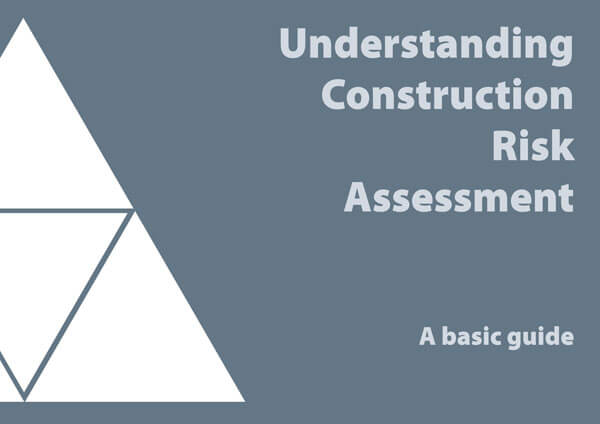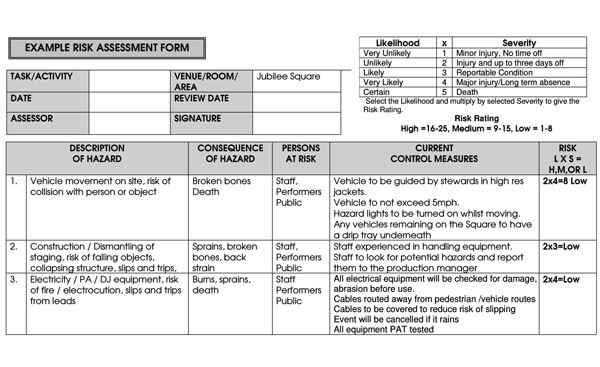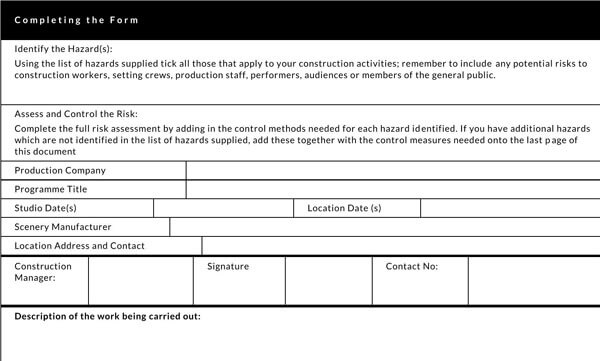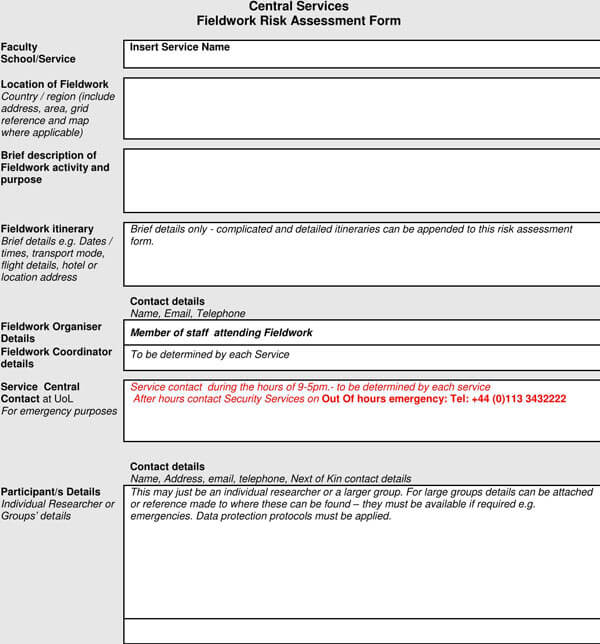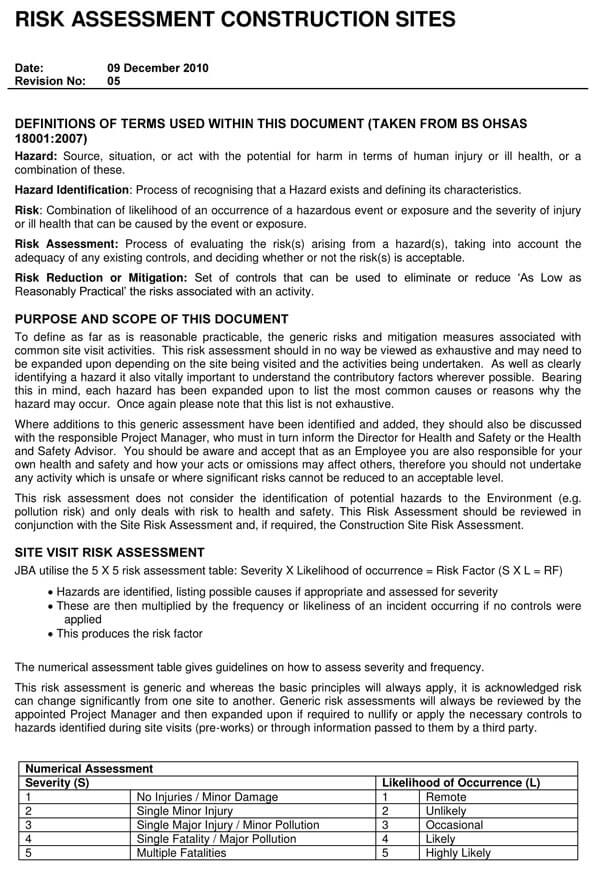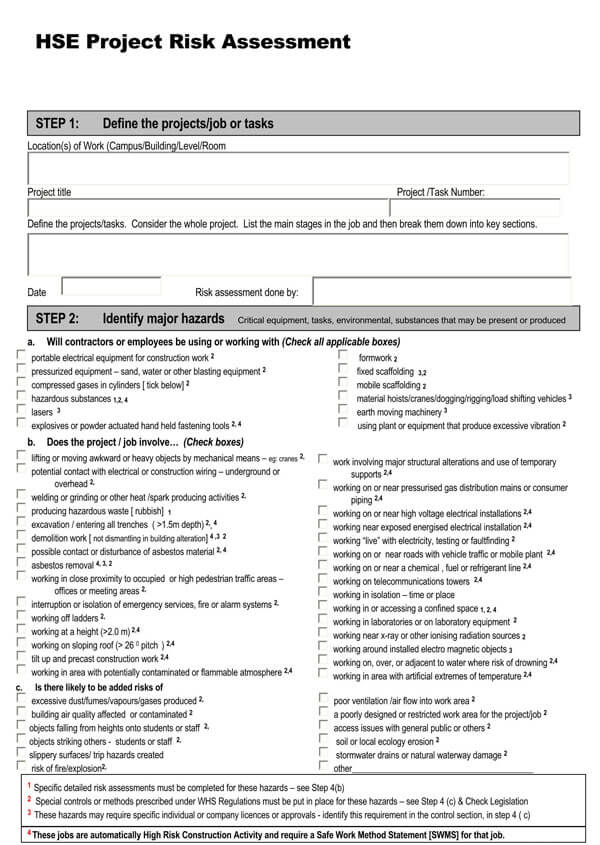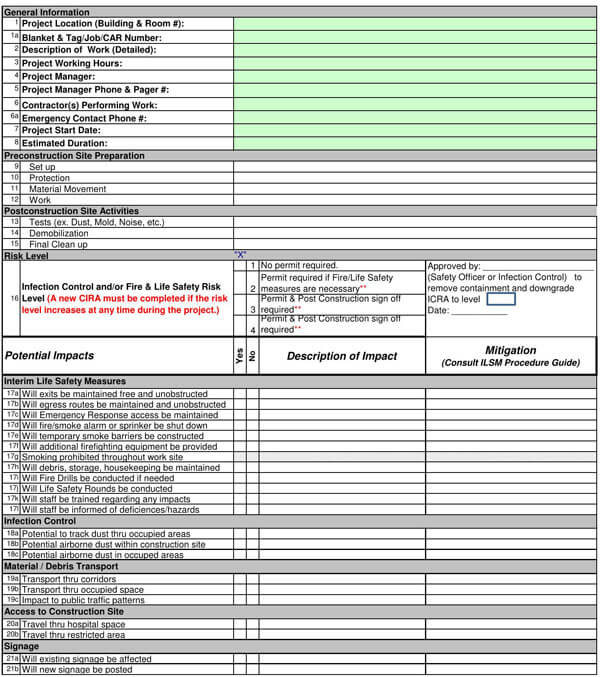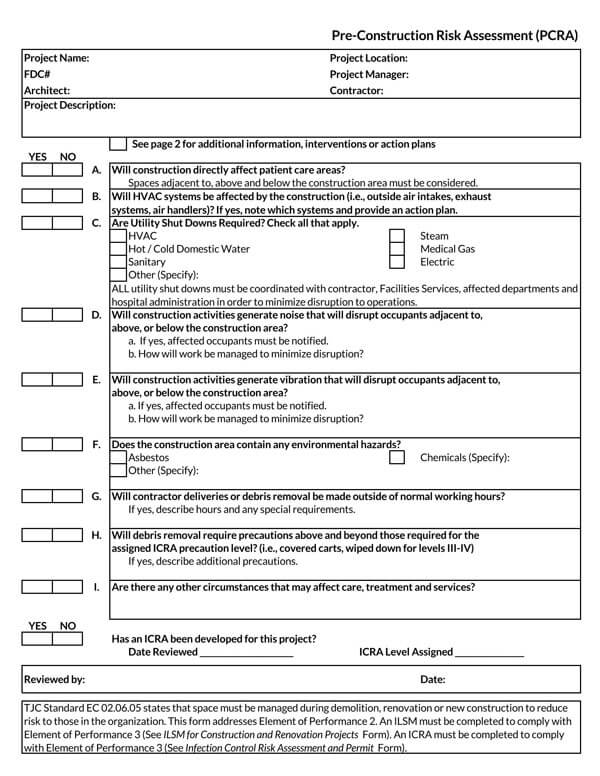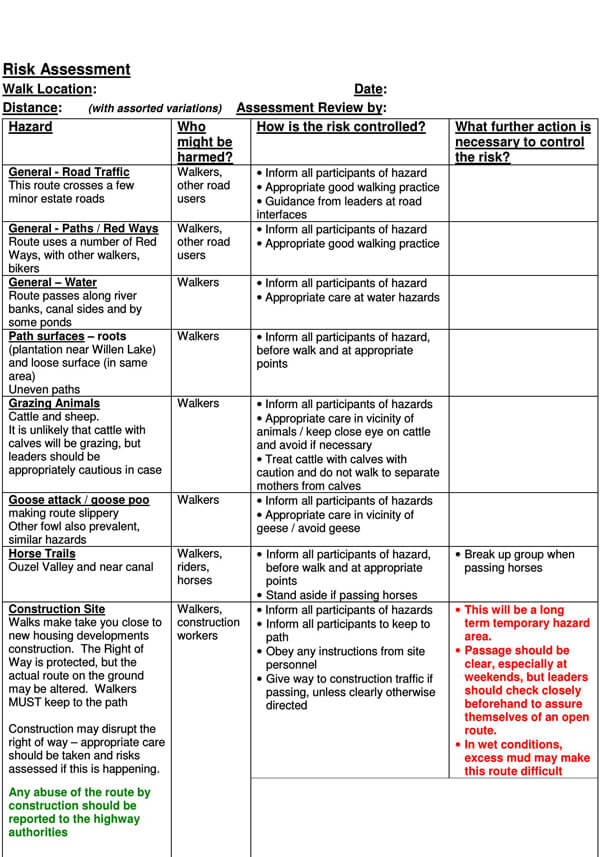Construction is a very risky and demanding business. Each project is usually unique and comes with its own set of opportunities and challenges. Assessing and managing a construction project’s risks can be tough but not impossible with proper planning and execution. When a potential risk manifests itself, it can greatly disrupt and derail a project, which is why construction risk assessment is very important. In order to avoid accidents in the construction site, one needs to be able to assess properly, monitor, and control the risks after they have been identified.
What is a Construction Risk Assessment?
Construction risk assessment is the assessment of all the health and safety hazards at a construction site. When properly conducted, construction risk assessment can provide insight into major health and safety hazards that can help the construction shareholders better conform to health and safety protocols. Construction risk assessment can also help safety teams implement curative measures to help protect and prevent workers from health and safety threats that they may face while working in construction sites.
Importance of Risk Assessment
Risk assessment is very key in any work environment as they form a vital part of an occupational health and safety management plan. Risk assessment helps to:
- Create awareness of the work hazards and risks
- Identify the employees at risk
- Determine the best method to control the hazards
- Determine if the measures in place are enough or if more should be done to curtail the risks
- Help prevent injuries or illnesses
- Prioritize hazards and control measures
Risk Assessment Process
Identify the hazards:
Hazards include anything that can cause harm to the workers at the construction site. As the manager, it is your obligation to assess the health and safety risks that the workers face.
There are three common types of hazards that you should look at when doing your assessment:
- Physical hazards: these include slips and trips, dust, lifting, machinery, etc.
- Mental hazard: these include things such as excess workload, working with high-need clients, long working hours, and bullying at the workplace
- Chemical hazard: these include all chemicals that the workers handle at the construction site
Decide who is at risk and how:
Identifying the workers how are risk starts with analyzing all full and part-time employees. As a manager, you should also assess the risk faced by the convention staff, agency, clients, visitors, and other members of the public at the construction site.
The managers must review the work routines at the construction site and the workers’ situation.
Assess the risks and take action:
The manager should deliberate on how likely it is that each hazard is likely to cause harm to the employees. This will help them decide whether or not the employees should reduce the risk level or continue working. Even after making sure that all precautions are taken care of, some risks often remain. The managers must therefore decide for each outstanding hazard whether the risk is high, medium, or low.
Record your findings:
Managers managing five or more workers are usually required to record their findings of the risk assessment. The assessment record should include all the hazards that they identified in the risk assessment and the action taken to mitigate or reduce them.
This record offers proof that the assessment was indeed carried out and will be used as the base for later reviews of working practices.
Review the Assessment:
A risk assessment should always be kept under review to:
- Make sure that the agreed health and safety precautions are continuously applied; and
- To take into account any new practices, equipment, and more demanding work targets
Goals of Risk Assessment
The main goal of carrying out a construction risk assessment is to analyze the hazards that people may face at a construction site and then devise ways of minimizing those hazards by adding control measures as deemed fit.
Construction risk assessment is usually geared towards:
- Determining all the parties are at risk, including the employees, the site visitors, etc.
- Raising awareness of the construction risks and hazards
- Devising new methods to curb the risks and checking to see if the methods in place are enough to control them
- Deciding if it is necessary to put in place a control program for the hazard
- Fulfilling legal requirements
When to Perform Risk Assessment
Before conducting a construction risk assessment, it is important to determine if it is necessary in the first place. A construction risk assessment should be done if:
- You have clear information on the possible risks or hazards at the construction site.
- You are uncertain of the level of damage that might occur should a hazard occur
- There are great risks and hazards in one part of the construction site that could potentially affect other hazards and impose greater risks, but you are not sure of how and to what extent.
Basically, if you don’t have enough knowledge or if you are uncertain of the risks or hazards at a construction site, you should perform a risk assessment. This will help you get a clear picture of what you are working with and help you take the necessary measures to avoid any accidents that may lead to financial loss.
Types of Risk Assessments
There are three main types of construction risk assessments:
Baseline risk assessment:
A baseline risk assessment is usually conducted to create a risk profile or a collection of risk profiles. The assessment is used to prioritize action programs for issue-based risk assessments.
A baseline risk assessment focuses on the documentation and indentification of risks that apply to the entire organization or project
Examples of baseline risk assessment include:
- Fire risk assessments
- Health and hygiene survey
- Aspect registers and environmental impact
Issues based risk assessment:
The objective of conducting an issue-based risk assessment is to conduct a comprehensive assessment study that will develop action plans for the treatment and mitigation of signal risks.
Issue-based risk assessment focuses on operational activities, system-based business functions, and processes.
Examples of issue-based risk assessment include:
- Introduction of new machinery at the site
- Operations or systems of work have been changed
- A near miss or an accident has occurred
- Task risk assessments
- Process hazard analysis
- A change in the risk profile
- Environmental impact analysis
- New knowledge or information is availed on the level of the risks to the workers
- Hazard and operability study
Continuous Risk Assessment
A continuous risk assessment, just like the name suggests, should be conducted continuously in the work environment. It is a very significant form of assessment that should take place frequently, as an integral part of the day to day management practices.
Continuous risk assessment is usually performed at an operational level where the process, system, and activities are continuously monitored by the first-line supervisors and operational floor management.
Examples of continuous risk assessment include:
- Inspections
- Medical surveillance
- Planned maintenance systems
- Work permits
- Critical task observation
- Toolbox talks
- OHS audits
Common Risk Factors in Construction Projects
- Poor definition of the project’s scope and incomplete drawings
- Safety hazards that may lead to injuries and accidents
- Errors in method statements may lead to delays
- Unknown site conditions
- Labor shortages
- Fire risk from arson, waste removal, or construction technique
- Natural disasters
- Construction staging areas are not wide enough
- Incomplete or poorly written work contracts
- Managing change orders
- Subcontractors delays
- Errors in quality surveys
- Theft or damage to tools and equipment
- Unexpected flux in material cost
How to Write a Construction Risk Assessment
Step 1: Start by noting down all the key details of the construction site such as the company’s name, the site location, the number of employees working at the site and everyone involved, the date and time the construction is set to commence
Step 2: Identify and analyze all the tasks that are to be performed and those that have already been done.
Step 3: Determine the risks and construction-related hazard that is associated with the tasks that are being performed by each worker
Step 4: Identify and rate the hazards: After determining the risks, rank them from low to high or by giving them numbers, i.e., on a level of 1-10
Step 5: Provide a detailed description of the hazards: After analyzing all the risks at the construction site, create a clear description of the most affected and the risk they face. This information is important to help the workers be more careful when working.
Step 6: Include annotations and photos to make the report more detailed: In order to make it easy for all the parties visiting the construction site to understand the risks that they are facing at the construction site, make sure to take photos of the risks and include annotations.
Step 7: Append signatures from all the parties involved: To show that you indeed conducted a risk assessment and that all the parties are aware of the hazard that they face working or visiting the construction site, it is important to have them all go through the document and sign it. This will also come in handy in case a worker decides to file a lawsuit against you.
Free Construction Risk Assessment Templates
If you are looking for the perfect risk assessment templates, we have just the right template for you! Here you will find some of the best experts tested, professionally designed templates in a different format for your convenience. Simply choose and download one that fits your needs, edit and tailor it to your project, and you are good to go!
Tips For Construction Risk Management Issues
To help prevent everyone from visiting the construction site from any damage or risks, here are some tips that you should use:
- Draft a hazard communication program for the construction site: develop a comprehensive way of communicating the risks that all parties are visiting the construction site are facing.
- List down all the hazardous chemicals present at the site: to make it easy for everyone to know what they are dealing with at the construction site; it is important to come up with a list of all the chemicals that they are dealing with to help them better understand how to avoid becoming victims.
- Label well all the containers with chemicals at the site: Make sure that after identifying all the chemicals at the construction site, you label them well. You don’t want your employees to confuse a chemical with another. Something which might lead to expensive damages.
- Label well all the containers with chemicals that are being shipped from one site to another: if any chemical is to be shipped from one point to another, have them labeled. This will help prevent any confusion at the site, which might slow down work.
- Prepare and distribute all the key safety data sheets to all the employees: After conducting your risk assessment, prepare and distribute all the key safety data sheets to everyone who will be working at the construction site.
Risk management is a key management tool in ensuring the health and safety of your employees. As a manager/employer, you are mandated by law to protect your employees and any other parties at your workplace from hard. After identifying, analyzing, and evaluating the risks in your assessment, you must communicate your findings to the employees to be aware of the risk they are facing. This will help make them safe and keen on their work and prevent you from potential litigation.
